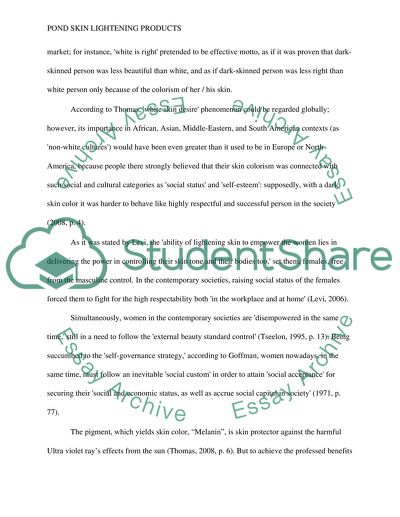Cite this document
(“Body Modification: Case Study on Ponds Skin Lightening Products Essay”, n.d.)
Body Modification: Case Study on Ponds Skin Lightening Products Essay. Retrieved from https://studentshare.org/sociology/1616496-body-modification-case-study-on-ponds-skin-lightening-products
Body Modification: Case Study on Ponds Skin Lightening Products Essay. Retrieved from https://studentshare.org/sociology/1616496-body-modification-case-study-on-ponds-skin-lightening-products
(Body Modification: Case Study on Ponds Skin Lightening Products Essay)
Body Modification: Case Study on Ponds Skin Lightening Products Essay. https://studentshare.org/sociology/1616496-body-modification-case-study-on-ponds-skin-lightening-products.
Body Modification: Case Study on Ponds Skin Lightening Products Essay. https://studentshare.org/sociology/1616496-body-modification-case-study-on-ponds-skin-lightening-products.
“Body Modification: Case Study on Ponds Skin Lightening Products Essay”, n.d. https://studentshare.org/sociology/1616496-body-modification-case-study-on-ponds-skin-lightening-products.


